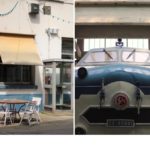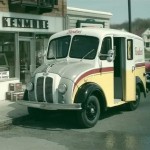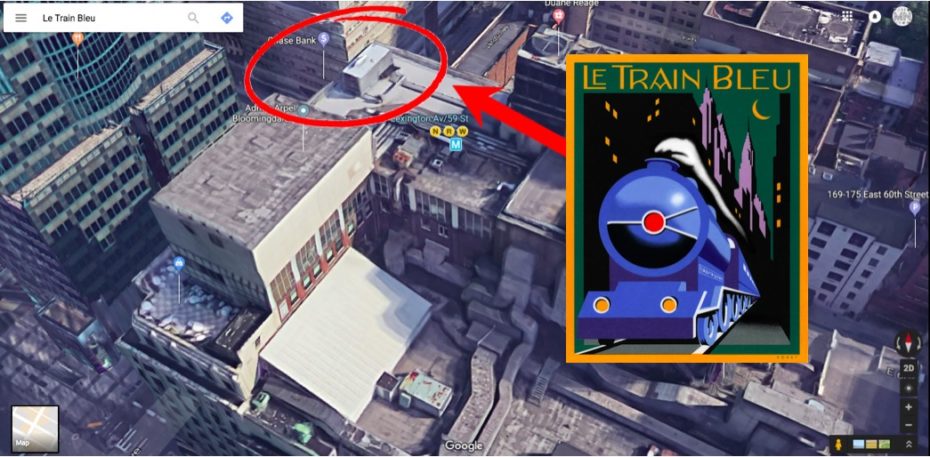
Bloomingdale’s flagship store on 59th street is one of Manhattan’s most iconic destinations for glitzy shopping. It was also, until a year ago, home to one of the city’s more peculiar, yet glamorous restaurants. Semi-hidden on the roof, and hardly known to the thousands of daily visitors to the department store, was an opulent train carriage. Even more remarkable, this secret train carriage was also a dining car. Some of us were lucky enough to dine at one of New York’s more unusual locations before the conductor sadly blew his whistle to say farewell to Le Train Bleu…
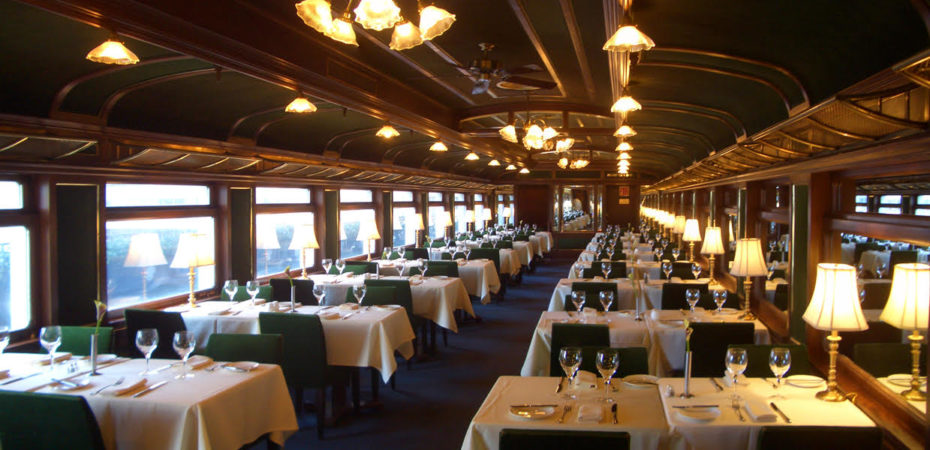
Le Train Bleu at Bloomingdale’s was created in 1979 in homage to a restaurant in Paris by the same name and a luxury train line. The original Le Train Bleu is a glittering restaurant, still going at the heart of the Gare de Lyon in Paris. More palace than train station, Le Train Bleu is graced with chandeliers, over forty sumptuous oil paintings, and gleaming, gilt framed mirrors.
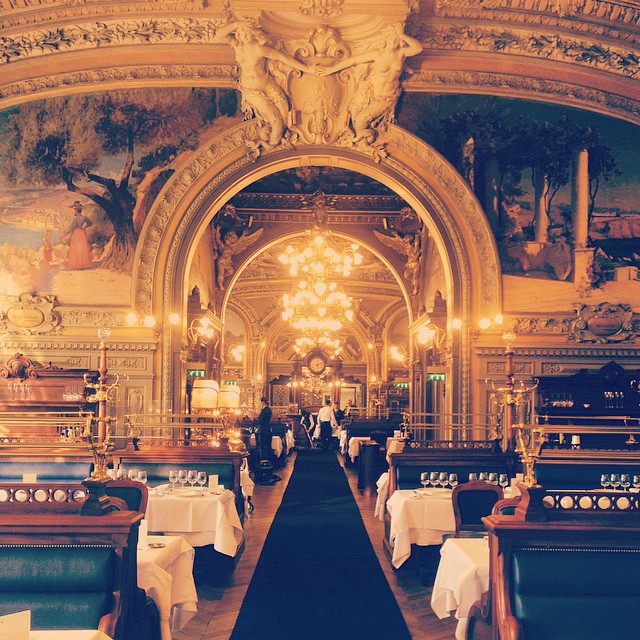
Just as luxurious was the real Blue Train, a deluxe overnight express train which ran from Calais to the French Riviera. Named for its dark blue sleeping cars, the Blue Train was every inch as grand as the Compagnie Internationale des Wagons-Lits first train line, the Orient Express.
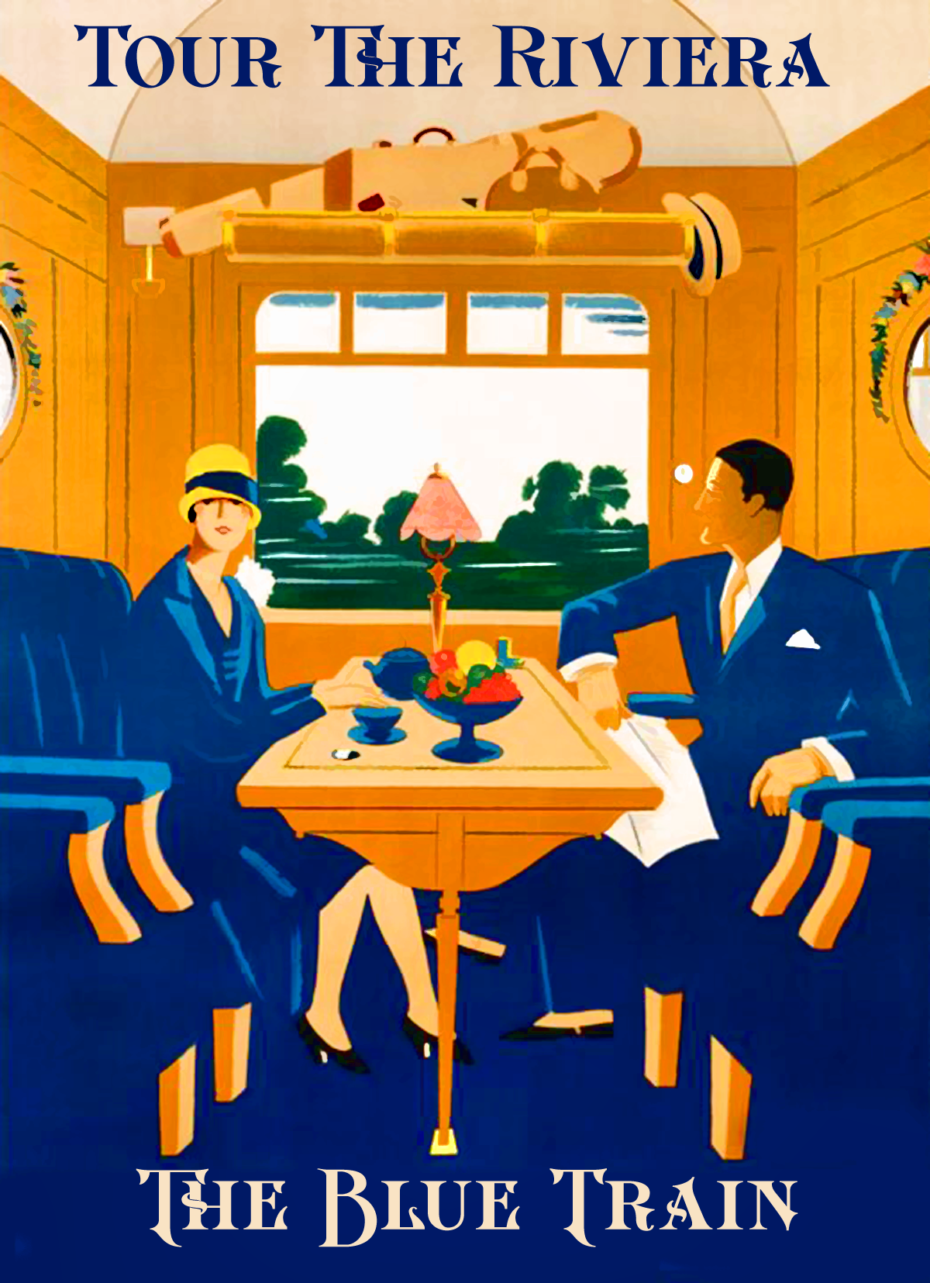
It would also be the setting for Agatha Christie’s 1928 novel, The Mystery of the Blue Train. Six years before he solves a Murder on the Orient Express, Poirot boards Le Train Bleu, bound for the French Riviera, when a brutal murder of an American heiress (and the theft of a fabulous ruby) takes place between Calais and Nice.
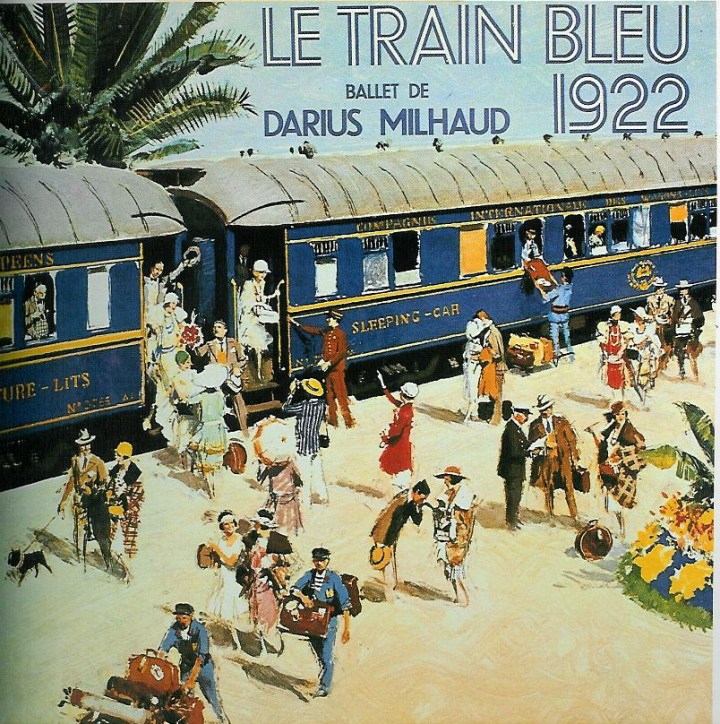
The roof top dining car in Bloomingdale’s roof was similarly grand, with marvelous vintage touches. It was also somewhat hard to find– and barely known. Tucked away on the sixth floor, was an anonymous looking staircase, nestled amongst the displays of the Cuisinarts and Creusets of the Bloomingdale’s kitchenware department. These narrow stairs led to an unexpected platform and there, unbelievably was a train carriage.
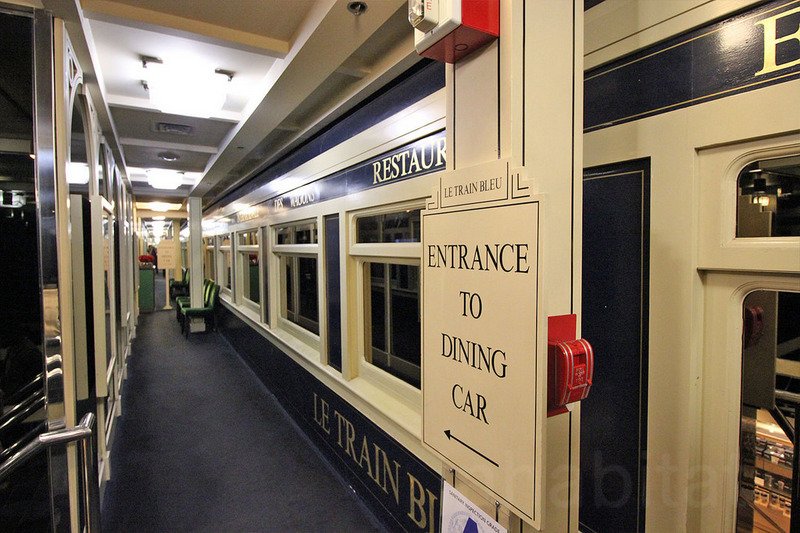
There is nothing quite as delightfully nostalgic than being called to dinner on a long, luxurious train ride. Although the Bloomingdale’s train never actually went anywhere, the restaurant was decorated just as a European first class dining car might have been. Le Train Bleu came resplendent with dark mahogany tables, plush velvet walls, fine linen table clothes, soft table lamps and waiters dressed as conductors. There were even luggage racks above your head, handy for storing Bloomingdale’s iconic brown paper shopping bags.
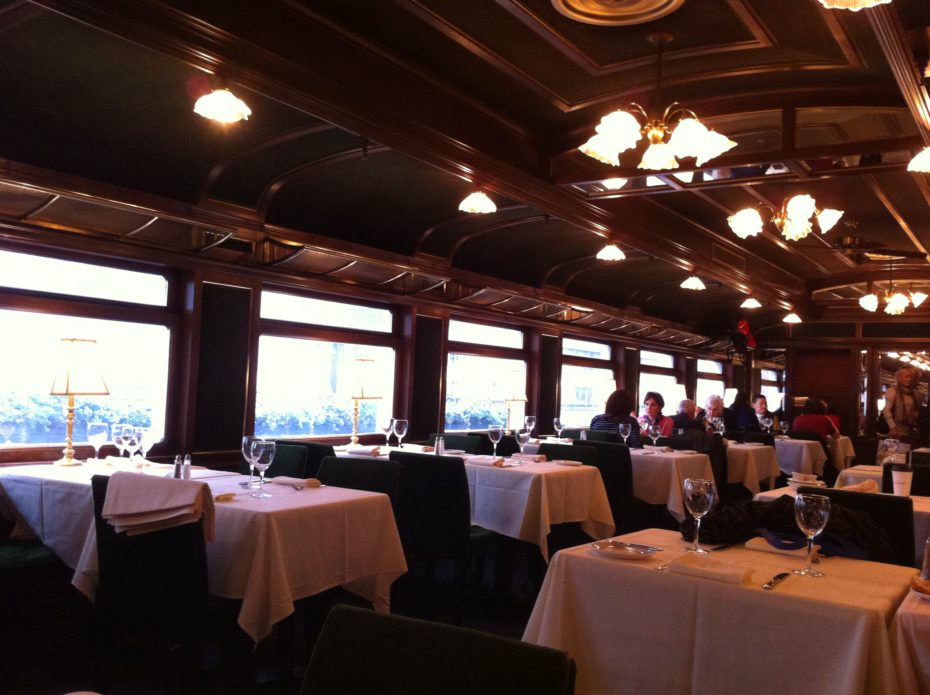
The artwork and monogramed logos on the menus were as impeccable as the white blouson jackets worn by the waiters. Created by Brooklyn born Michael Doret, they evoked long past trips from the 1920s through Paris to the South of France. We caught up with the man who designed the sumptuous artwork nearly forty years ago.
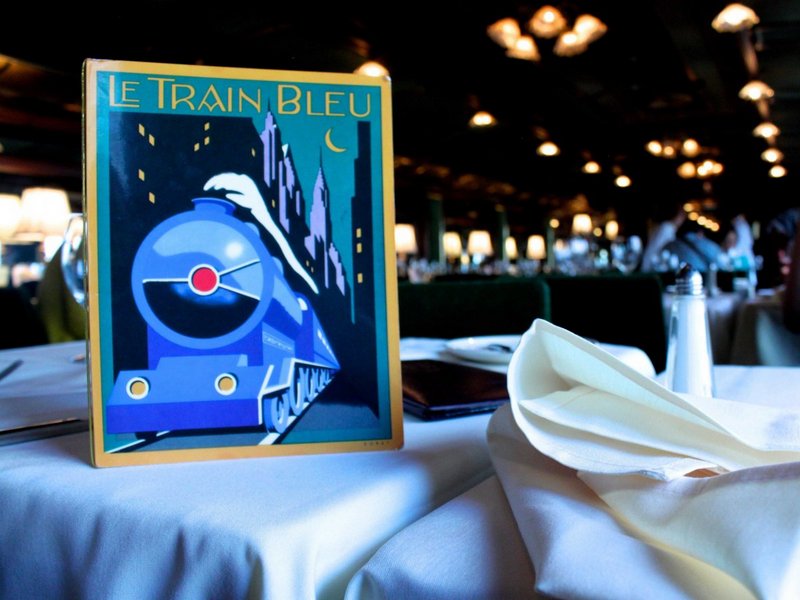
“John Jay, the Creative Director at Bloomingdale’s at the time, had already worked with me on several projects, when the Le Train Bleu job came up”, explains Doret. “It wasn’t the type of project I usually took on—it being much more image-oriented than most of my lettering projects—but John believed in my abilities, and let me “stretch my wings” on this one. When designing this series of pieces what I looked to for inspiration were the posters from the likes of A.M.Cassandre, Tom Purvis, Joseph Binder, Otis Shepard, E. McKnight Kauffer and other mid-century designers who were known for their simple, bold travel graphics.”
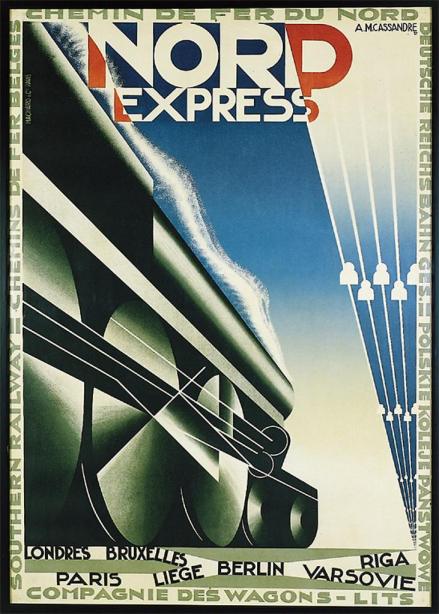
“In other words, work from the period that the restaurant was trying to evoke. When I designed the monogram, I looked to work of an older vintage, since, in the tradition of monograms, there is usually a bit more complexity to the designs.”
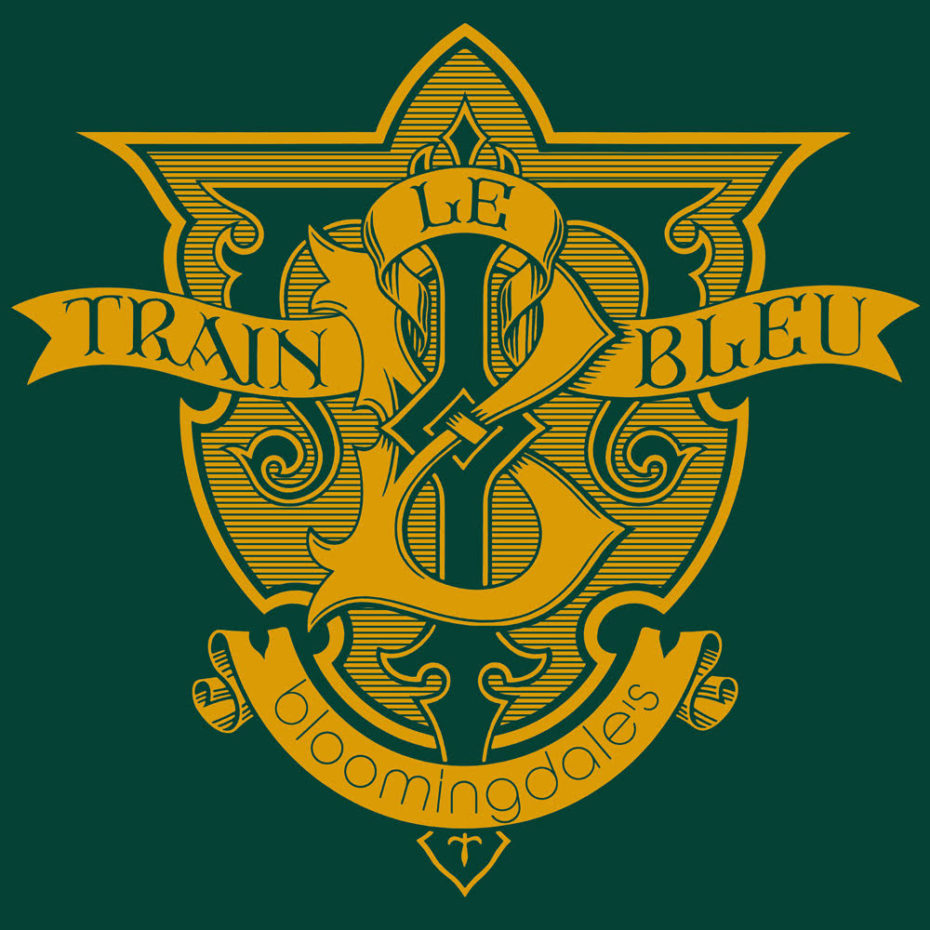
There was something slightly surreal about dining on the excellent East Coast oysters, and sipping a well made Gibson, whilst looking out of the window at part of the Upper East Side skyline. The clientele was mostly of the slightly elder, upscale Manhattan class, all fur coats and compacts. Such was the authenticity and care put into Le Train Blue, you half expected to pull out of the make believe station at any moment.
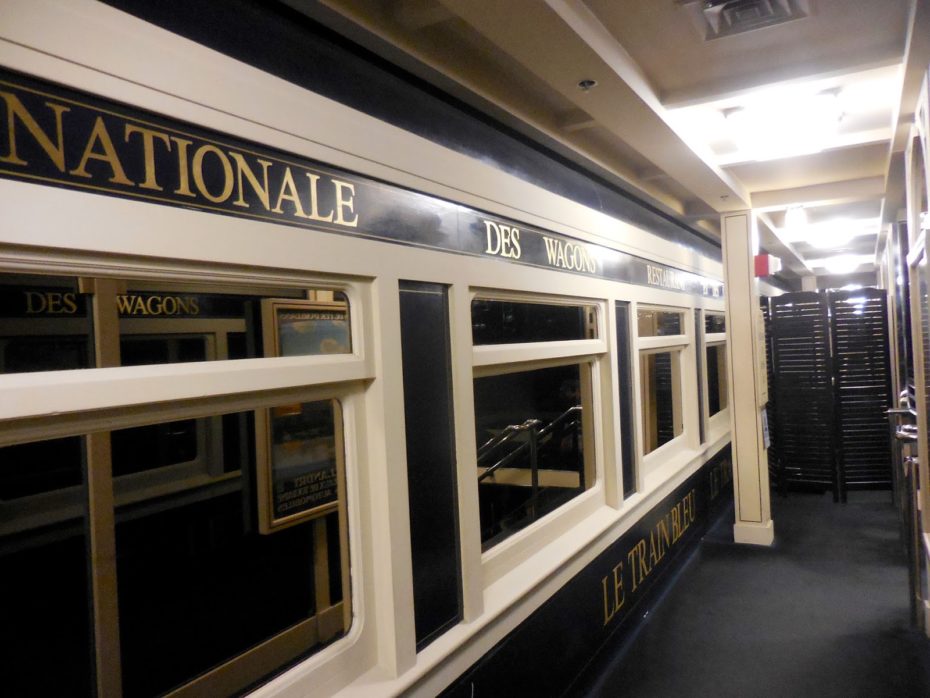
“The two pieces of art that were to flank the stairway leading up to the restaurant were particularly challenging because of the tall narrow shapes they needed to fit into,” explains Michael Doret. “That’s why I decided on a sort of an overhead view of the train with the steam from the engine rising straight up, adding an interesting design element and also helping to work into the verticality of the two panels.”

“When it came to the menu cover the angle I chose was more traditional, but I decided to tie it into the vertical art through color and design. My thought was that the train was traveling north on Lexington Avenue, with the Chrysler Building in the background.”

But after nearly 40 years, unfortunately it seems as though the slightly peculiar restaurant has closed for good. Speaking to the New York Times, Anne Keating, senior VP over at Bloomingdale’s says, “Everyone has special memories of the last 37 years. We look forward to welcoming something new in 2018.”
Whilst most department stores offer some kind of restaurant, there was surely nothing as unique, charming or special as the little train carriage on the roof of Bloomingdale’s.



